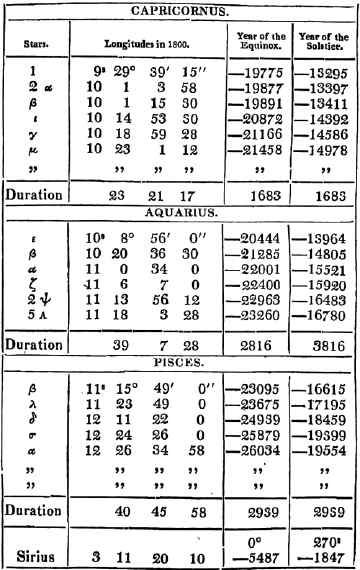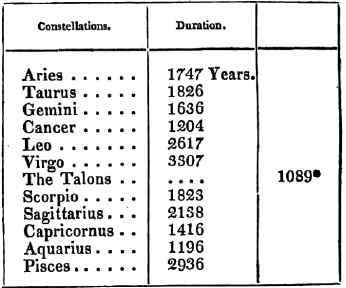 |
their own ideas of the science of the Chaldeans, the
Egyptians, &c. &c.; no real inconvenience will result.
We may assign to these people the intelligence and
wisdom of the moderns, but we can borrow nothing
from them; for either they had nothing to leave, or
have left nothing. Astronomers will never draw from
the ancients any thing of the smallest utility. Let us
then leave to the learned vain conjectures, and confess
our positive ignorance of things useless in themselves,
and of which there is not a single existing record.
 "The limits of the constellations vary according to "The limits of the constellations vary according to
the authors that we consult. We see these limits expand
or contract where they impress, from Hipparchus to
Tycho, from Tycho to Hevelius, from Hevelius to
Flamstead, Lacaille, Bradley, or Piazzi.
 "I have said elsewhere, that the constellations were "I have said elsewhere, that the constellations were
of no use, only that at best they enable us more easily
to find out the stars, whilst the stars themselves point
out particularly the fixed points whence we may refer
the motions of the colures or the planets. Astronomy
only began at the period when Hipparchus made the
first catalogue of stars, measured the revolution of the
sun, the moon, and their principal inequalities. All the
rest is involved in darkness, uncertainty, and gross
errors. It would be lost time to endeavour to explain or
search into the chaos.
 "Excepting a few particulars, I have said all that I "Excepting a few particulars, I have said all that I
think on the subject. I do not pretend to make
converts: it is of little consequence who may or may
not adopt my opinions; but if my arguments be
compared with the speculations of Newton, Herschel,
Bailly, and many others, it is not impossible
|


 1-10
11-20
21-30
31-40
41-50
51-60
61-70
71-80
81-90
91-100
101-110
111-120
121-130
131-140
141-150
151-160
161-170
171-180
181-190
191-200
201-210
211-220
221-230
231-240
241-250
251-260
1-10
11-20
21-30
31-40
41-50
51-60
61-70
71-80
81-90
91-100
101-110
111-120
121-130
131-140
141-150
151-160
161-170
171-180
181-190
191-200
201-210
211-220
221-230
231-240
241-250
251-260



![[made with GoClick]](imgs/goclick.gif)